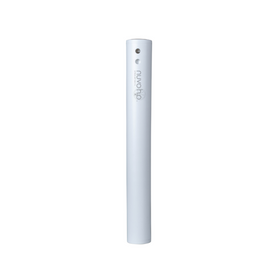
The Solution to Safe Water Disposal for Homes and Tiny Houses
Last Updated: Mar 17, 2025There are dozens of small steps that can be taken to transition your home into an energy-efficient, sustainable building that limits damage to the environment while simultaneously protecting your health. Purchasing FSC-certified wood for your new floors helps to safeguard fragile forest ecosystems around the world. Switching to LED lights or opting for a passive house retrofit will drastically reduce the energy consumption of your home while solar panels or household wind turbines will diminish or perhaps even eliminate all together household CO2 emissions.
When it comes to water use inside the home, there are dozens of low-flow features that will shrink total household water usage. While your low-flow toilet might use less water per flush, dealing with the black water (wastewater from toilets) that flows through your pipes is usually considered to be beyond the scope of the homeowner. The vast majority of households either send their black water into the municipal sewer system or into a backyard septic tank and are oblivious to the long-term effects that flushing your toilet might have. For tiny homes, however, most are not hooked up to a city’s system and therefore face the challenge of disposing of their water safely.
While it is possible to completely get rid of the black water leaving your home through opting for a composting toilet, not every homeowner will be keen on living without the flush toilet. The Watson Wick septic tank provides a unique alternative that allows the black water generated by flush toilets in the home to be disposed of in a way that is actually beneficial to the landscape around your home while also disposing of potential pathogens in a safe and hygienic manner.
Problems with Sewers and Septic Tanks
There are around 325 million people in the United States, and the average person flushes the toilet five times per day. Even if every household were to use low-flow toilets that only consumed two gallons per flush, around 3 billion gallons of black water is generated each and every day. While new technologies on the horizon look at “recycling” black water (known as sewer mining) in order to provide a home with a source of greywater for flushing toilets and irrigation needs, the vast majority of household black water is sent either to municipal sewers or septic tanks.
The EPA recognizes that black water contains disease-causing bacteria and viruses that can result in human illness”, and that it “contributes to nutrient build-up in ecosystems that result in changes to habitat and the proliferation of nuisance pest species.” While U.S. law requires black water sewage to be sent to a wastewater treatment plant, at least 772 U.S. cities have combined storm and sanitary sewer systems. Heavy rains often overwhelm the sewer system thus leading to the dangerous pathogens present in our black water being released into the local environment.
Septic tanks are often installed in places that don’t have access to the municipal sewer system. However, in many cases, these septic tanks are not properly installed and can cause contamination of surface and groundwater resources. Around half a million households in the U.S. lack proper plumbing, and many of these problems are related to a lack of a functioning septic tank in marginalized, rural areas. Even for households that have a functioning septic tank system that safely disposes of household black water, the fact remains that thousands of gallons of potable water are being sent into a hole where that water cannot be reused or taken advantage of.
What is the Watson Wick Septic Tank?
The Watson Wick is an alternative septic system that is inexpensive, simple to build, and allows the nutrients in household black water to be utilized by the landscaping around the home. What makes the Watson Wick different from traditional septic tank systems is that a series of relatively shallow bioswales underneath the surface of the soil allow for reuse of the nutrients and liquid in black water for irrigating and feeding plants.
The Watson Wick uses either coarse sand, gravel or pumice as a wick to absorb and filter the contaminants present in black water. Unlike traditional septic systems that can be buried up to 10 feet into the ground, the Watson Wick has a shallow leach field so that the roots of carefully selected plants can access the nutrients in the black water. Thus, Watson Wick offers two separate means of decontaminating black water. First, the pumice or gravel wick will filter out contaminants, and secondly, the roots of the plants will absorb the rest of the water, nutrients, and any remaining pathogens. Plants have the ability to filter out bacteria and other pathogens through their stems and roots, specifically due to xylem, a specialized plant tissue with millions of vessels and tiny pores that is Nature´s most effective filtration and purification device.
How to Build a Watson Wick Septic System
Unfortunately, not many plumbers or home contractors have experience building a Watson Wick System. However, since these systems are similar in principle to regular septic systems with a few key, sustainability differences, some professional plumbers may be willing to install one for you.
Table of Contents
- Environmental Benefits of the Watson Wick Septic Tank

Firstly, you will need a three-foot deep trench that is layered with 18-24 inches of gravel or pumice covered by 6-12 inches of topsoil. The larger your family, the longer the trench will need to be. On one side of the system, you will have an infiltrator tank that is floorless in order to capture the wastewater and begin the filtering process. The trench needs to be built off contour so that the wastewater will filter through the system.

Water-loving plants are then densely planted in the top soil on top of the trench. Calla lilies, horsetail, cattails, elephant ear, and scarlet swamp hibiscus are unique vegetation that thrives on large amounts of water. This unique landscaping will benefit from the excessive nutrient load and will function as a mini wetland ecosystem that will attract a diversity of wildlife near your home. Fruit trees can also be planted at the tail end of the system. Their roots will also take up the extra nutrients and there won’t be any risk of pathogen transmission as the capillary system in the tree will filter out any pathogen that might still be present in the soil.

Environmental Benefits of the Watson Wick Septic Tank
The Watson Wick system allows the nutrients in black water to be recycled into the local ecosystem. The excessive nutrients and water will help certain plants to flourish, increase the biodiversity around your home, attract wildlife, while also getting rid of any potential pathogens in your household black water flows.
Instead of sending your wastewater into a sewer system or septic tank where groundwater and environmental contamination is a possibility, and where the water and nutrients are essentially wasted, the Watson Wick system allows for a sustainable way to deal with your black water that improves the resiliency of the ecosystem where your home is located.
Tobias Roberts
Tobias runs an agroecology farm and a natural building collective in the mountains of El Salvador. He specializes in earthen construction methods and uses permaculture design methods to integrate structures into the sustainability of the landscape.










